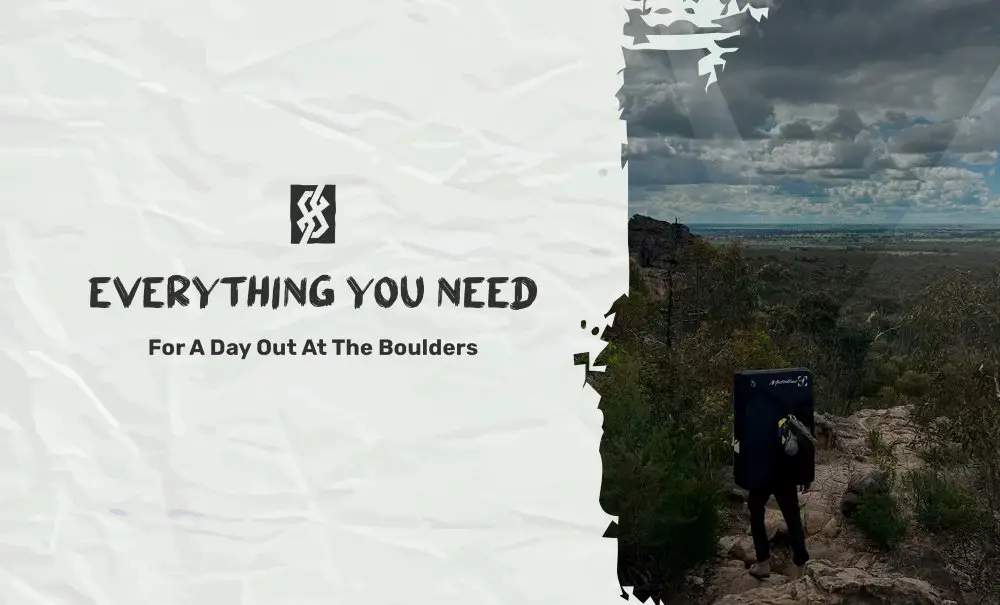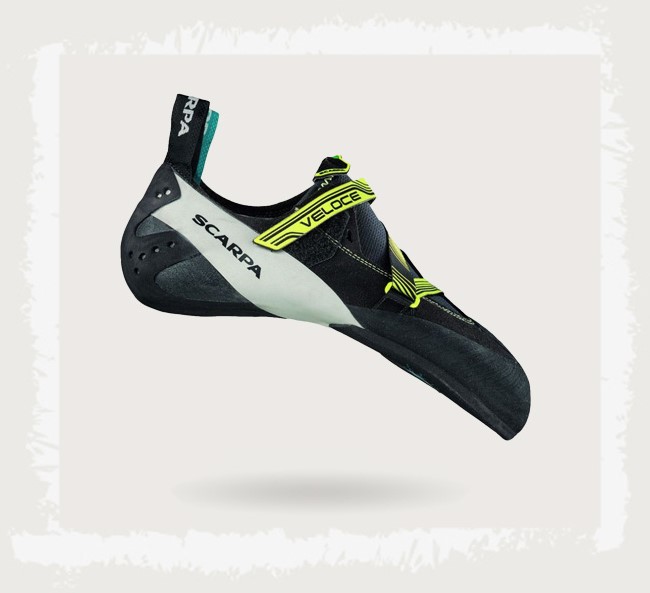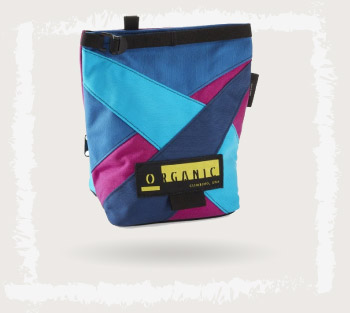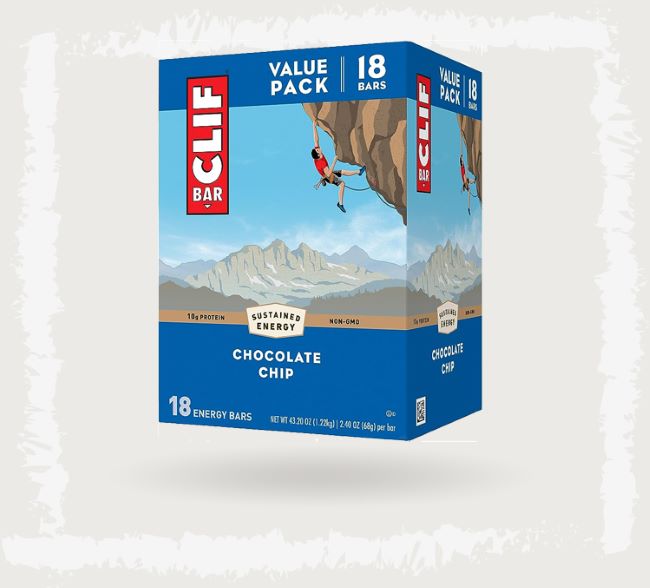Unlike traditional rock climbing, bouldering doesn’t involve ropes or harnesses. Instead, climbers rely on their skill, strength, and some essential pieces of equipment to conquer these routes, known as “problems.”
Whether you’re a seasoned climber or just starting out, understanding the right gear is crucial not only for performance but also for safety. In this article, we’ll dive into the world of bouldering equipment, exploring the must-have gear that helps climbers tackle those tricky problems with confidence and style. So, grab your chalk bag, and let’s get started on this exciting journey up the bouldering wall!
Bouldering Gear List: What Do I Need?
If you want to go very minimalistic, you can just rock up to the gym or outdoors with just your shoes and a chalk bag. But, to really get the most out of your session, there are a few extra things you can pack in your bag.
Your indoor rock climbing gear will differ from your outdoor but below is a list of all the essential bouldering accessories you need!
#1: Climbing Shoes
Climbing shoes are the first thing you’ll take with you when bouldering. Depending on what you are climbing, you might have a soft shoe or a stiff shoe. For indoor climbing, soft shoes like the Scarpa VSR, Scarpa Veloce or the La Sportiva Skwama are all very popular.
To find out more about what shoes are best for you, take a look at Climbing Shoe Review.
#2: Crash Pads
Brought to us in the 1980s, crash pads revolutionized the sport. These thick, portable foam mats are placed on the ground to cushion any potential falls. Crash pads are vital for safety, as they reduce the risk of injury when you fall off the boulder and are particularly important in outdoor bouldering.
For outdoor bouldering, I suggest you bring with you at least two pads. There are two types, one that folds like a briefcase, and one that is like a taco. Each has its benefits and drawbacks, but having a mixture of both means you’ll be ready for any type of rocky terrain.
#3: Chalk & Chalk Bag
Popularized by the legendary John Gill, chalk is used to dry your sweaty hands and improve grip. You’ll need more of it during summer and less of it during winter. And where do we store chalk? In a chalk bag of course! If you turn up to the gym with your chalk in a plastic ziplock bag, go get yourself a colorful chalk bag.
Chalk bags come in all sorts of shapes, sizes and colors so go wild when choosing!
#4: Bouldering Brush
I’ve lost count of the amount of bouldering brushes I have misplaced, but if you can look after it, I highly suggest getting a brush. This is especially useful in the gym, where over chalkers (like me) get the holds dirty. A brush can sweep all that dirty chalk away making the holds more grippy.
All bouldering gyms have brushes of all lengths dotted around, so even if you don’t have one (or have lost it…) you’ll not be far from one anyway.
Of course, brushes are also very useful outdoors too. Not just for cleaning holds, but for cleaning your shoes and cleaning the rock from tick marks or chalk that has been left behind.
#5: Comfortable Clothing
Wear clothing that allows a full range of motion. Stretchy, durable fabrics are ideal. Comfort and mobility are key in bouldering, as complex moves and stretches are often required.
When you come back down from the wall, make sure you have something warm to put back on. Us boulderers love to socialise, so while we are sitting chatting, spotting or allez-ing our friends, it can get cold quite quickly. This applies both in the gym and at the crag. If you are bouldering in the summer, make sure to wear loose clothes, vests, sports bras and shorts. If you are looking for comfy climbing clothes, REI is a great place to start.
Check out our what to wear bouldering guide to find out more!
#6: Skin Care Products
Items like climbing balm or tape can be crucial. Bouldering is tough on the skin, especially on your hands. These products help in healing and protecting your skin from cuts and abrasions.
A skin file can also be useful for filing down calluses and microtears in the skin.
#7: Hydration & Snacks
Staying hydrated and energized is important, especially during long bouldering sessions. Water bottles and energy-rich snacks like nuts or energy bars should be part of your gear.
If you are out in the heat, make sure you fill your water bottle with electrolytes. This will make a huge difference to your energy levels. Thermal bottles are definitely your go-to, especially in the summer as they can keep water cold for up to 12 hours.

#8: A Good Backpack
A durable backpack to carry all your bouldering essentials, especially if you’re hiking to a bouldering spot. It should have enough space for your, shoes, chalk bag, water, snacks and other personal items.
#9: Climbing Tape
Useful for supporting injured fingers or protecting your skin from climbing flappers. Tape is a versatile tool in a boulderer’s kit for both preventive care and injury management.
#10: First Aid Kit
Always a good idea to carry a basic first aid kit for minor injuries. Bouldering can lead to scrapes and minor cuts, so being prepared is wise.
#11: Portable Fan

Popularized by the Mellow crew, a fan is not only good for cooling you down in summer but it is a great way to dry out sweaty hands, which is crucial for maintaining a good grip on the rock.
Particularly popular are the Makita portable fans.
#12: Sun Protection
This includes sunscreen, a hat, and sunglasses. Protecting yourself from the sun is essential, especially in exposed outdoor bouldering areas.
#13: Insect Repellent
If you’re bouldering in an area with bugs or mosquitoes, insect repellent can be a lifesaver. If you’ve ever climbed in areas like Tonsai or Railay, then you know how mosquitoes can become very annoying very quickly, forcing you to leave the crag earlier than expected.
If you don’t want to spray yourself with greasy and stingy repellant, you can get coils that keep mosquitoes away.
14#: Hangboard & Resistance Bands
These are great for warming up your fingers and muscles before tackling the boulder problems. A proper warm-up is crucial to prevent injuries.
#15: Headlamp or Flashlight
If you plan to climb late or start early, a headlamp or flashlight is essential for safety and visibility.
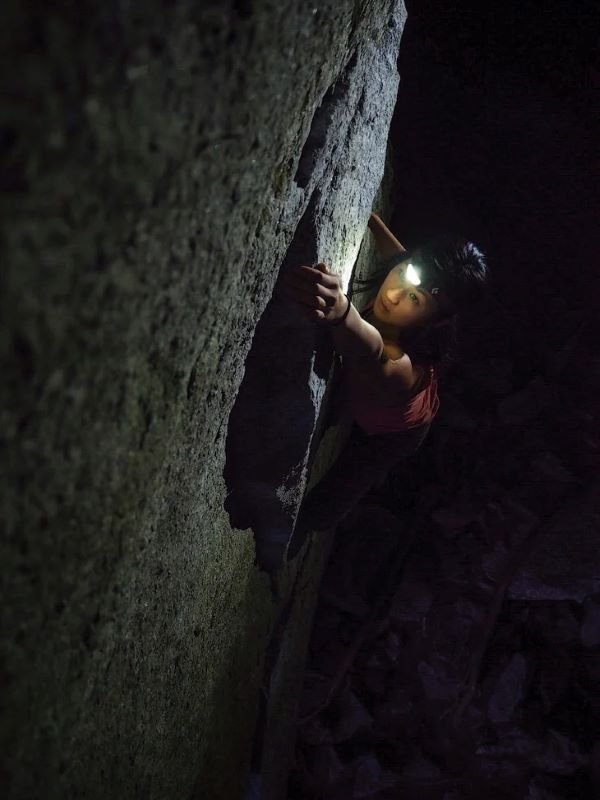
#16: Guidebook or Bouldering App
Especially useful in unfamiliar areas, these resources provide information on boulder problems, difficulty levels, locations and ethics.
#17: Toilet Paper & Trowel
For areas without facilities, it’s important to be prepared for bathroom needs while adhering to Leave No Trace principles. Don’t leave your poop or toilet paper lying around. Dig it out of right people!
#18: Trash Bag
I think it goes without saying, don’t leave your trash lying around. Always practice Leave No Trace ethics by packing out all your trash, including used tape and food wrappers. Having a roll of small trash bags takes up no space at all in your bag and the environment (and fellow climbers) will thank you for it.
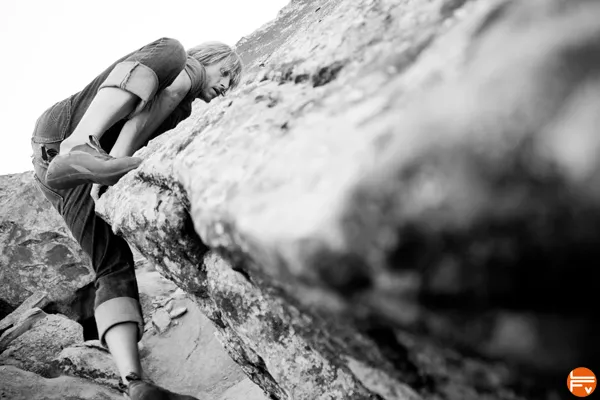
What Bouldering Gear Will You Bring?
Whether you’re bouldering indoors or embracing the challenges of the great outdoors, having the right gear is essential for both performance and safety. From the basics like climbing shoes and crash pads to outdoor-specific items like weather-appropriate clothing and fans, each piece of equipment plays a vital role in your climbing experience.
Remember to prepare for the specific conditions you’ll face, whether it’s the weather, the terrain, or the duration of your session. By equipping yourself with the necessary gear and adopting a mindful approach to safety and environmental responsibility, you can enjoy your bouldering session to its fullest.



